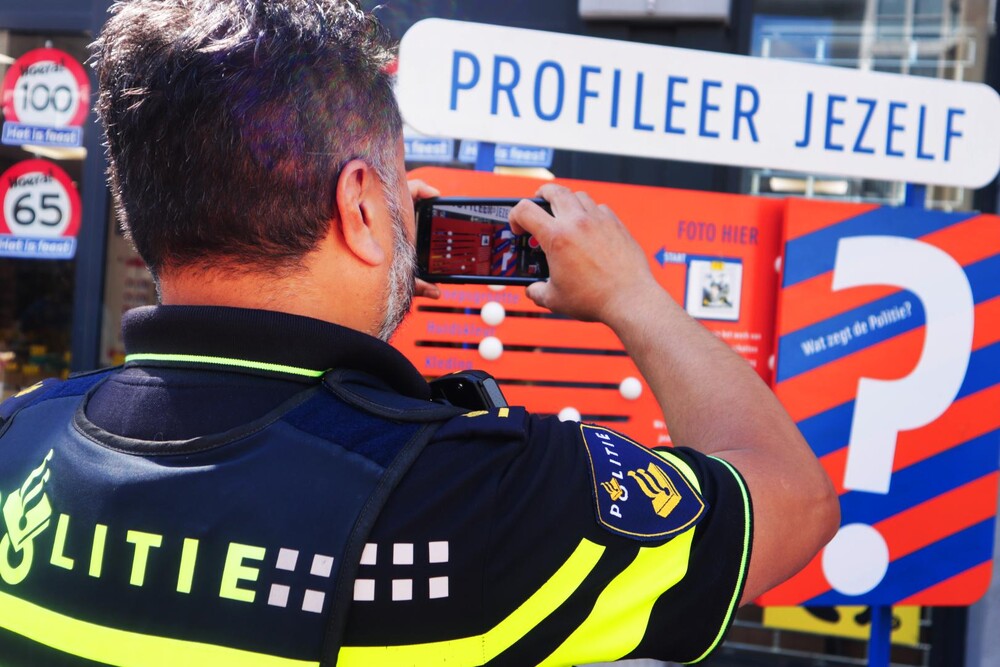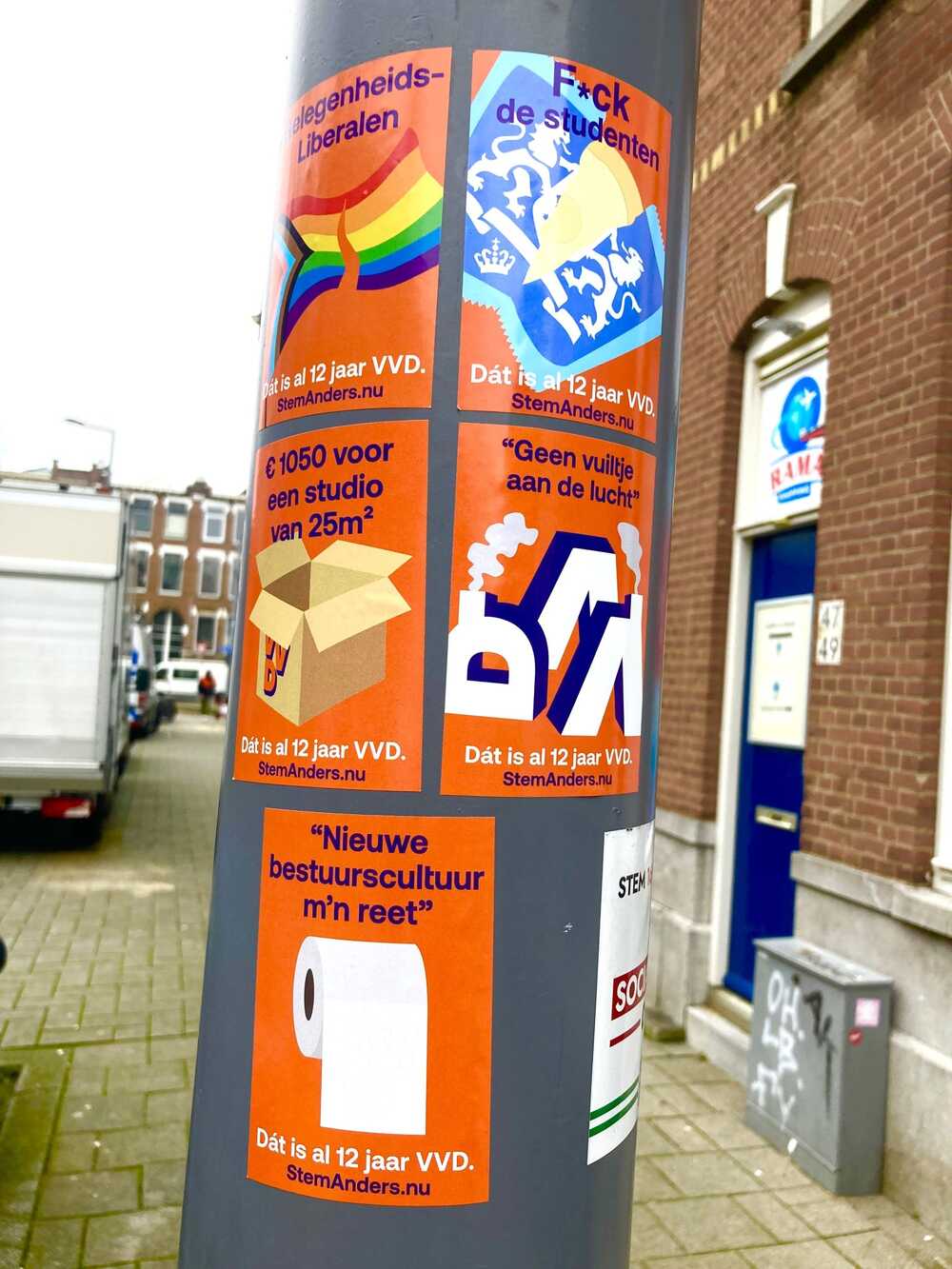Pauline Wiersema
An avid and outspoken activist, Pauline Wiersema graduated from Design Academy in 2018. Since then, she has used humour as a design tool to break down boundaries between the public and politics, landing her the role of contributing to the slogan and concept for the election campaign of the political party GroenLinks in 2023.
Wiersema has an impressively extensive list of design projects: her lack of fear of failure helps her avoid creative blocks and propels her to work independently as well as with big clients. Wiersema spoke with independent curator and writer Tiiu Meiner about her experience of working in politics and how she navigates political correctness in a time of societal distrust.

→Tiiu Meiner: What brought you to the field of politics?
Pauline Wiersema: I think since a very young age, I was always interested in the daily whereabouts of society. Over the last couple of years, I also joined some political parties, and I actually became really active, and I got to know a lot of people. That kind of spiralled into an obsession with how we try and run a country, which is not always done the best way. So I try to look at it from an outside perspective and use my design skills to help bring about a better understanding of contemporary politics for people.
→TM: How do you deal with the expectations and pressure on designers to tackle big global problems?
PW: What is important, is that you should never hold yourself back from making a project. Filtering yourself like that is going to drain all your creativity. I refuse to end with creative blockage because the topic is too big. I always try to do something, and that can be something really tiny, but at least it’s something. That is what makes me the happiest and gives me the most energy. If it doesn’t work in the end, or people don’t love it, or it looks horrendous, so be it. Next time I’ll do better. I’m not afraid of failure if I learn from it.
“I refuse to end with creative blockage because the topic is too big”
→TM: You now have a Masters in Sociology, in addition to your Bachelors from Design Academy. How do you incorporate this social theory into your making?
PW: When I do a project, I don’t necessarily go back to all that knowledge and read up and think how a theory could perfectly match with my outcome. I feel like that theoretical knowledge is there anyway, in an intuitive way now. It’s experience and I don’t think you need to force the experience back into projects because it’s already there. Rather, I try to think of a really good concept for the context, for which I generally have a crazy brainstorm that lead to a bunch of really weird ideas.
What is very important to me is also just to ask feedback from people, to check on myself. During the making process itself however, I’m not constantly in these balancing acts of political correctness and creativity.
→TM: You often use humour as a tool to work through the blockages that difficult and taboo topics can impose, and make big topics approachable. Can you talk more about how you see humour as a tool in design and politics?
PW: I think humour can do something that barely anything else can do. It can break the tension in a room. It can make people laugh. It can cut a conversation in half. It can make things discussable that you normally wouldn’t discuss. It’s also a strategic way of interacting with others. When I’m in a new space, I make a lot of jokes, because I know it’ll lighten the atmosphere. There’s a lot of power in humour, and there are a lot of things you can address through that.
I also think it barely gets used in politics because people are very afraid to cross the line of saying something stupid. You have to have a good sense of humour, and I think a lot of politicians are afraid to use it.

“There’s a lot of power in humour”
→TM: Why do you think it’s so important for designers and politicians to collaborate?
PW: I feel like in order to really get somewhere with this whole downfall of political trust, we really need to start taking people very seriously, and we need to understand how deep their understanding goes of equality and inequality and economic struggles. It’s about making politics more approachable in a way. Politicians just talk and talk and talk, or maybe they write a memo or policy. But it’s something most of us will never see. We need to make that more approachable through new visual and creative ways.
We have to go beyond the museum or policy-making offices and go into public space, because then everyone can be reached. There we can talk to a lot of really different people, and that is crucial. For example, I conducted a project on the streets of Rotterdam focused on ethnic profiling by the Dutch police. I created an interactive board and set it up in three different areas of the city. I facilitated conversations between the police and individuals who have experienced ethnic profiling. Both sides had so much to share, things they felt they didn’t have the opportunity to express otherwise. There is a lack of spaces for these important discussions to take place, and design can play a significant role in facilitating such interventions.
TM: What advice do you have for people wanting to work with political topics, or with politicians?
PW: I believe the first step is to reach out to your elected representatives. They are supposed to be there to represent your interests, so they should hear your voice. Many of my projects were self-initiated, which eventually caught the attention of politicians. In some cases, I directly pitched my ideas to their team, and they recognized the value it held for them. Of course, this can be hard. If your clients are not familiar with the creative field, they may initially struggle to grasp the nature of your work. In situations like these, you have to make an effort to explain that you are offering precisely what they desire; just presented in a new and innovative way. Once you successfully bridge that understanding gap, you can accomplish a lot, and it could even lead to future collaborations